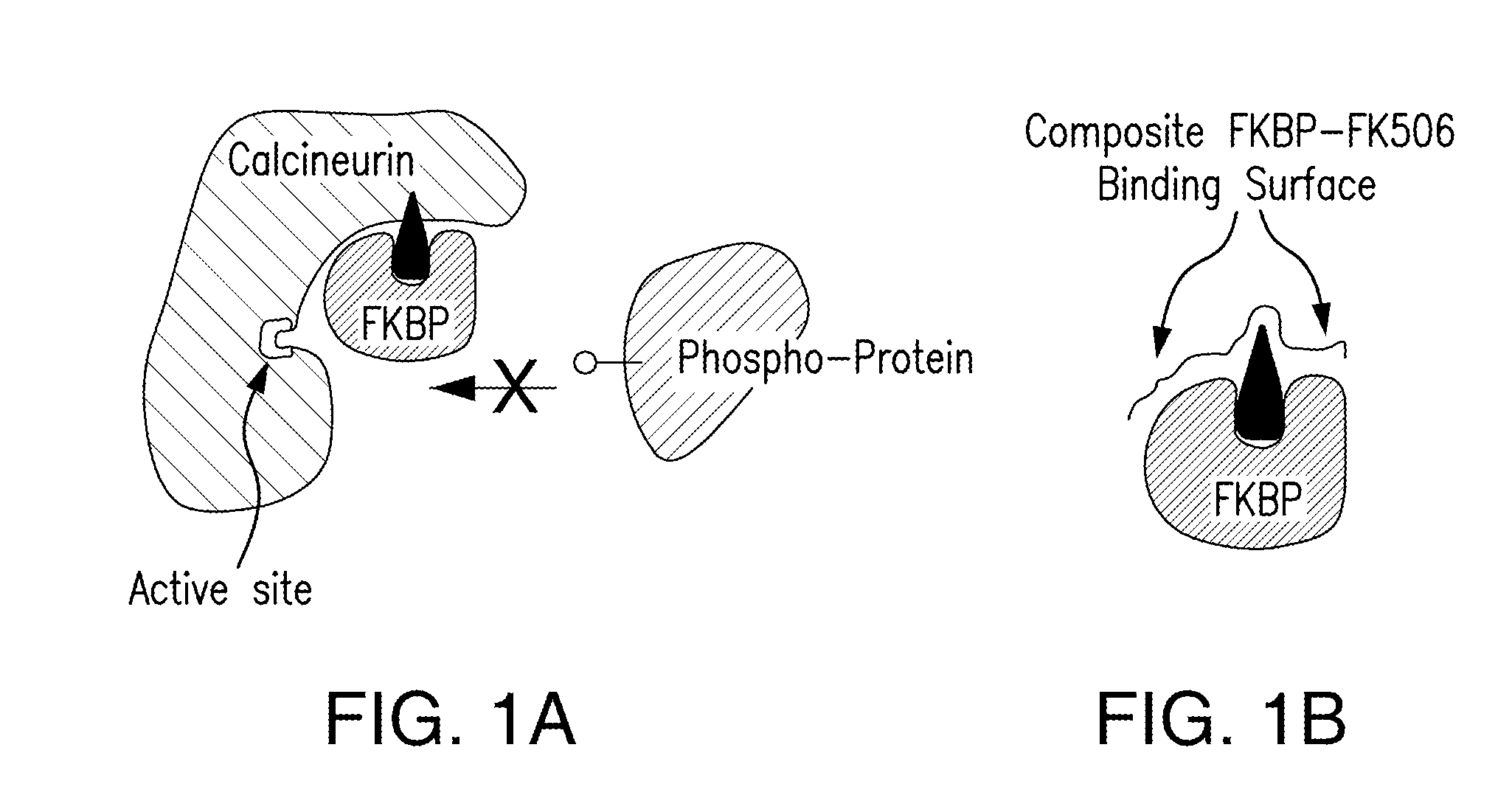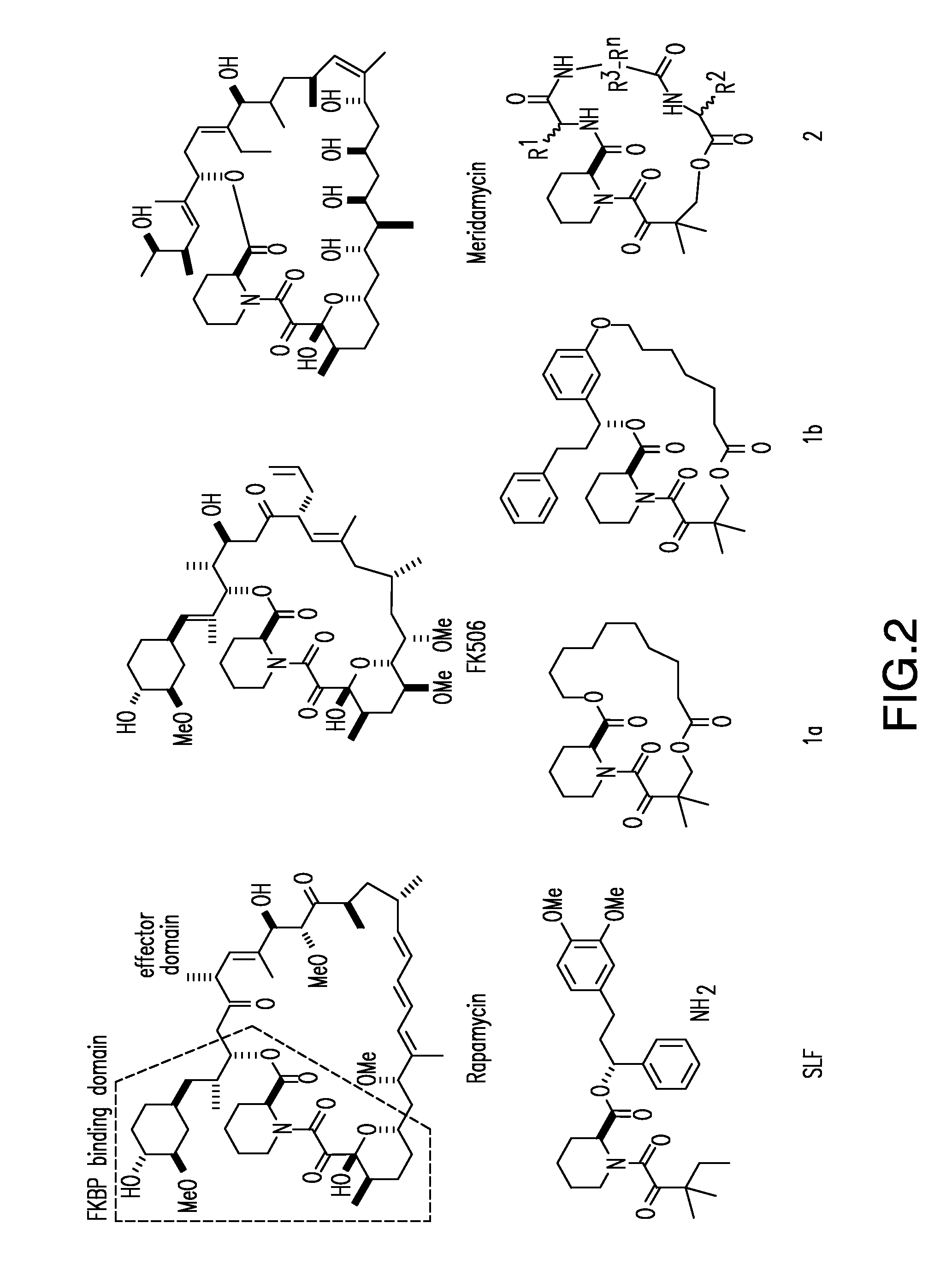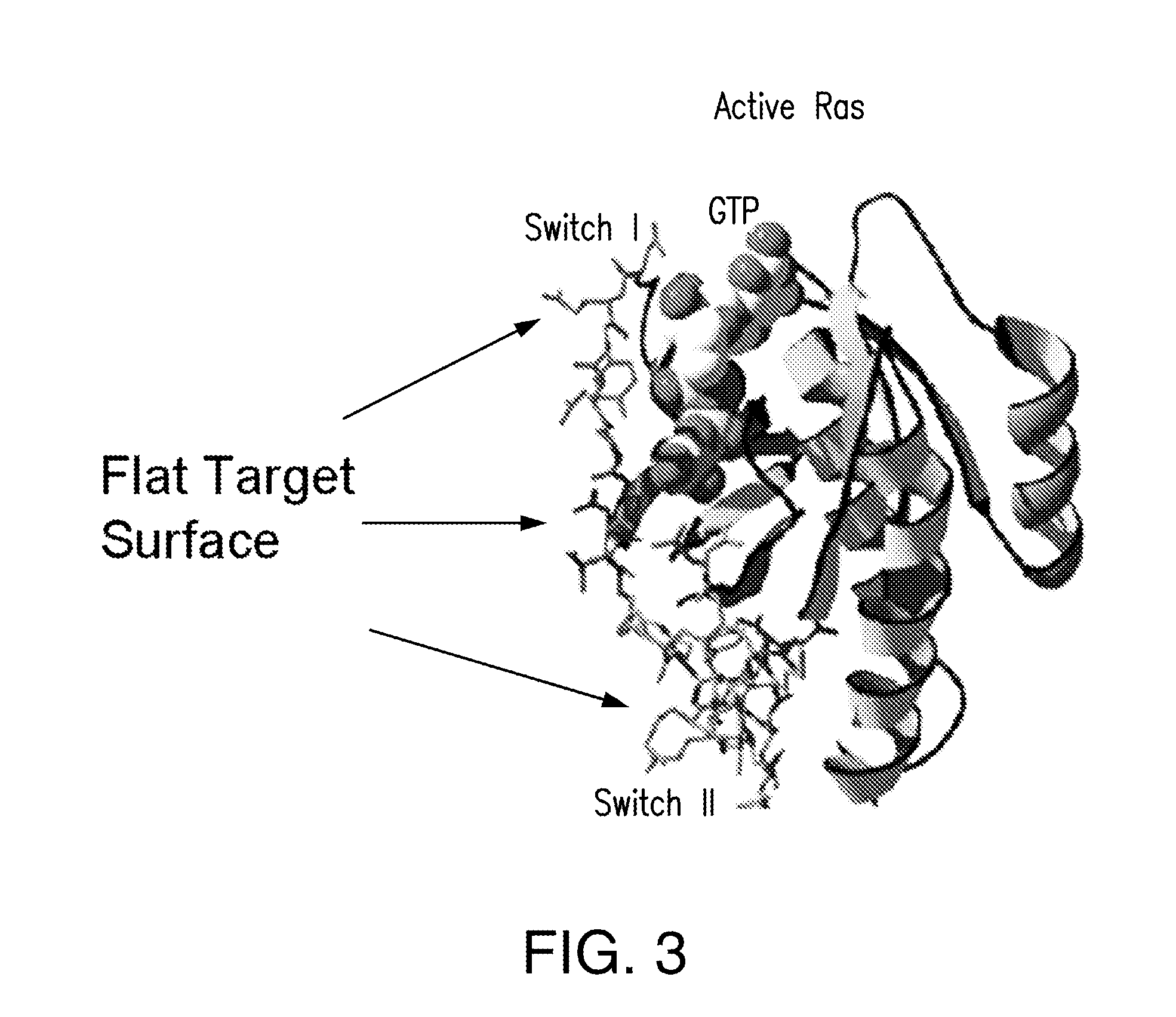Small molecule composite surfaces as inhibitors of protein-protein interactions
a technology of protein-protein interaction and small molecule composite surfaces, which is applied in the direction of peptides, immunoglobulins, peptide/protein ingredients, etc., can solve the problems of time-consuming and complex natur
- Summary
- Abstract
- Description
- Claims
- Application Information
AI Technical Summary
Benefits of technology
Problems solved by technology
Method used
Image
Examples
example 1
1. Example 1
Creation and Evaluation of a Pilot Rapalog Library
[0182]FK506 and rapamycin are immunosuppressive drugs with a unique mode of action. Prior to binding to their protein targets, these drugs form a complex with an endogenous chaperone FK506-binding protein 12 (FKBP). The resulting composite FK506-FKBP and rapamycin-FKBP binding surfaces recognize the relatively flat target surfaces of calcineurin and mTOR, respectively, with high affinity and specificity. To test whether this mode of action may be generalized to inhibit other protein targets, especially those that are challenging to inhibit by conventional small molecules, we have developed a parallel synthesis method to generate a 200-member library of bifunctional cyclic peptides as FK506 and rapamycin analogues, which were referred to as “rapalogs”. Each rapalog consists of a common FKBP-binding moiety and a variable effector domain. The rapalogs were tested for binding to FKBP by a fluorescence polarization competition...
example 2
2. Example 2
Discovery of a K-Ras Inhibitor
[0204]Screen of the Large Rapalog Library (Rapalog C Series) against G12V K-Ras. Recombinant GST-K-Ras(G12V) was chemically labeled with the fluorescent dye Texas Red on a lysine residue. Since GST is larger and contains many more Lys than K-Ras, the dye should be mostly on GST and thus not affect the function of K-Ras. The library beads (˜1,000,000 beads) were incubated in the presence of fluorescently labeled GST-K-Ras and recombinant FKBP fused to EGFP (enhanced green fluorescent protein) (˜500 nM each). Under a fluorescent microscope, we found that a small number of the beads had both green and red fluorescence, indicating that they had bound both GST-K-Ras and FKBP-EGFP (FIG. 9).
[0205]The top 20 “hits” (ones with most intense red and green fluorescence) were isolated and sequenced by PED / MS.25 Many of the selected rapalogs contained a pair of aromatic amino acids, often adjacent to each other (Table 5). Furthermore, the presence of posi...
PUM
| Property | Measurement | Unit |
|---|---|---|
| pH | aaaaa | aaaaa |
| volume | aaaaa | aaaaa |
| structure | aaaaa | aaaaa |
Abstract
Description
Claims
Application Information
 Login to View More
Login to View More - R&D
- Intellectual Property
- Life Sciences
- Materials
- Tech Scout
- Unparalleled Data Quality
- Higher Quality Content
- 60% Fewer Hallucinations
Browse by: Latest US Patents, China's latest patents, Technical Efficacy Thesaurus, Application Domain, Technology Topic, Popular Technical Reports.
© 2025 PatSnap. All rights reserved.Legal|Privacy policy|Modern Slavery Act Transparency Statement|Sitemap|About US| Contact US: help@patsnap.com



